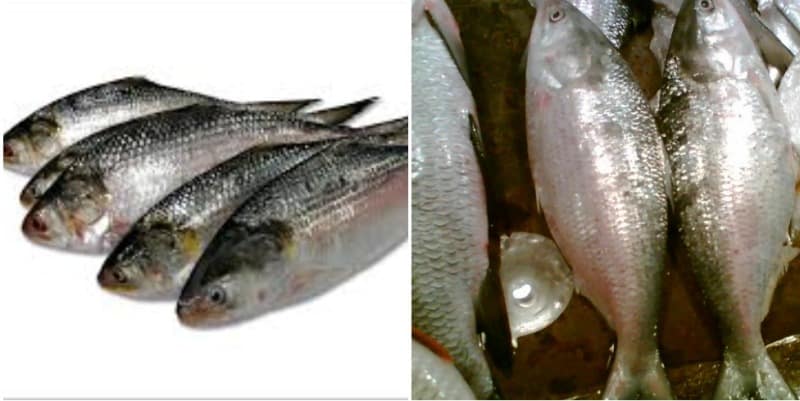A guide for Hilsa fish farming (Pulasa) in India
Today, we discuss Hilsa fish farming (Pulasa), Pulasa fish price and other practices.
The Hilsa or Ilish fish is a species of fish in the herring family which is very popular as food fish in South Asia. Different names of Hilsa fish is Ilish, Hilsa herring, Hilsa Shad, Ellis, Modar, Palva, Pallo Machhi, Sboor, Terubuk, etc. It is an important species of fish in Bangladesh.
The scientific name of Hilsa is Tenualosa ilisha. Hilsa is a popular, tasty fish found in the rivers of Bangladesh round the year. The Hilsa fish is rich in oil which provides mainly 16:0 and 18:1 fatty acid but also a little of w-3 polyunsaturated fatty acids.

Hilsa is the main important single-species fishery in Bangladesh. It is the popular food fish to the people of the Bay of Bengal region. Hilsa is the national fish of Bangladesh which contributes about 11% of total fish production and 1% to the GDP.
Hilsa fish is a freshwater and brackish water fish, popular in India especially West Bengal, Odisha, Tripura, Assam, and Andhra Pradesh. The Hilsa fish is a popular food in Andhra Pradesh and Bengal. This fish is very famous in Godavari districts of Andhra Pradesh and is available during the monsoon period and is being called as Pulasa in the native language. This fish may cost around Rs. 1000 to 1200 per kg.
You should not miss Profitable Crops for Vertical Farming.
Varieties of Hilsa:
There are mainly two varieties of Hilsa fish. They are;
- Tenualosa ilisha and
- Tenualosa toli ilisha
The Hilsa varieties are found in the marine and fresh waters of Bangladesh. However, sources in the department of fisheries of the country’s ministry of fisheries and livestock reveal that Hilsa has either become extinct or its numbers have fallen steeply in 20 rivers. For instance, the Hilsa fish has virtually vanished from the 170-km-long Karnaphuli River. There has been a 20 percent decline in Hilsa fish catch from rivers over the past 17 years. This despite the increase in Bangladesh’s total haul of the Hilsa fish due to heavy fishing in the sea.
Hilsa’s peculiar habitat makes it impossible to breed it artificially through aquaculture, unlike another type of fish. The adult Hilsa fish swims several kilometers upstream to freshwater from the sea for spawning and returns to saline water after that. The eggs hatch in freshwater and the sub-adult Hilsa, called Jatka, flows back downstream into the sea, a procedure that takes a few months. This has been pointed by, Marine Resource and Hilsa Spawning Impact Assessment between Nijhum Dwip and Hatia South, conducted by the Center for Natural Resource Studies, a non-governmental environmental organization.
Hilsa fish is one of the tastiest fish because of its soft oily texture. The fish is locally known as “Macher Raja” means the king of fish.
Nutrition
Hilsa fish is a rich, oily fish packed with several nutrients. A 100-gram serving of Hilsa fish contains roughly 310 calories, 25 grams of protein, and 22 grams of fat. It also supplies 27% of your daily value of vitamin C, 2% of the iron requires, and an amazing 204% of your daily calcium requirement.
You may also like Prawn Farming at Home.
Breeding
The Hilsa fish generally reach maturity within their 1 to 2 years of age. They breed mostly in rivers, upstream to about 50 km or even over 1000 km as in the Ganges. But the younger fish could breed in the tidal zone of rivers. The main breeding season of this Hilsa fish is during the southwest monsoon from May to August. With a shorter season from January to February or March month. Depending on the size of the females, they can lay up to two million eggs per spawning.
Benefits of Hilsa (Pulasa):
The most popular benefits of Hilsa rich in omega-3 fatty acids are listed below;
- Boosting heart health
- Skincare
- Improving brain health
Other benefits of eating Hilsa include the following:
- Eating Hilsa fish regularly helps alleviate the effects of rheumatoid arthritis and relieve joint pain. This is due to the anti-inflammatory nature of the fish.
- Studies suggest that regular intake of Hilsa fish helps lower blood cholesterol levels.
- Hilsa fish is rich in vitamin A or retinol that helps protect the night vision and prevents age-related macular degeneration.
That’s all folks about Pulasa fish or Hilsa fish farming.
You may also like Growing Okra from Seed.
How to buy small fish for farming
For fish breed or fingerlings, you should contact a fish hatchery near you.
How can I get seeds of pulasa? Plz give me information